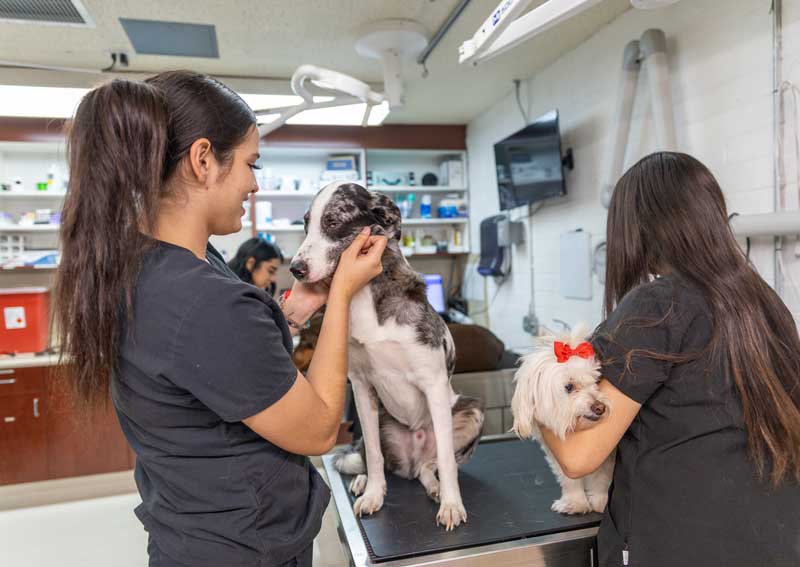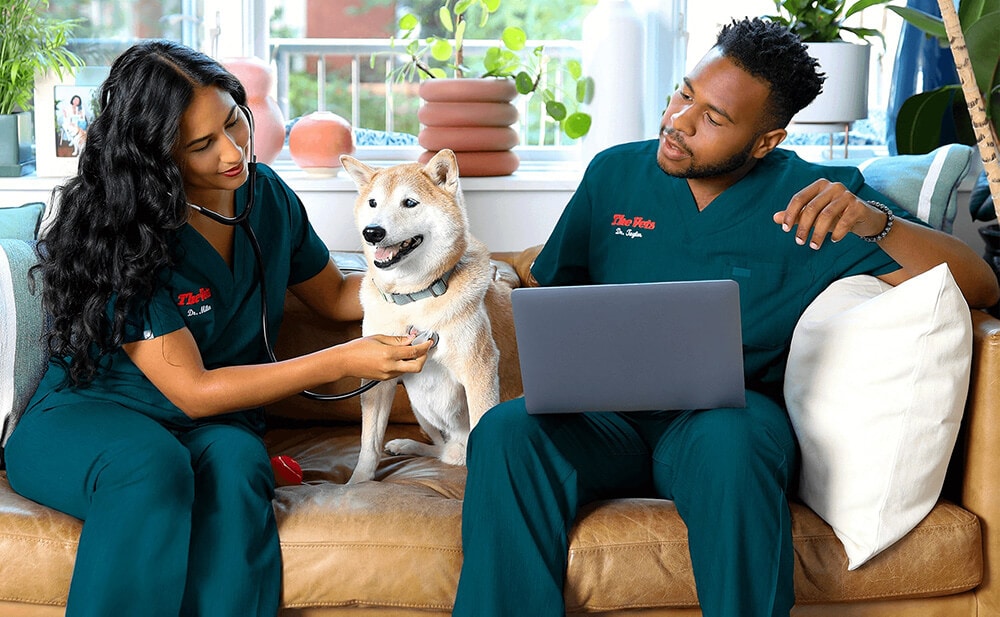Everything About Vet Surgery: Understanding the Value of Expert Treatment for Your Family pets
Veterinary surgical treatment is an essential component of pet health care. It incorporates numerous procedures, from regular elective surgeries to immediate interventions. Comprehending the ins and outs of these surgical procedures can assist family pet owners make notified choices. The preparation, implementation, and recovery stages are necessary for guaranteeing the health of animals. With correct knowledge, owners can browse the complexities of veterinary treatment. What factors should be considered before an animal goes through surgery?
Sorts Of Veterinarian Surgeries
When a pet needs medical intervention, comprehending the numerous kinds of vet surgeries can help pet owners make notified choices. Veterinary surgical procedures can be generally categorized into 3 primary kinds: optional, immediate, and emergency surgeries. Elective surgeries, such as spaying or neutering, are planned treatments that are not immediately serious. Urgent surgical treatments, like those for foreign body removal, need to be done quickly yet are not serious in the moment. Emergency surgical procedures, such as those resolving extreme trauma or inner bleeding, are critical and call for instant attention.Additionally, surgeries can differ in complexity, varying from minimally intrusive laparoscopic procedures to more considerable open surgical procedures. Each sort of surgical procedure carries its own risks and recuperation processes. Comprehending these categories permits animal proprietors to take part in meaningful conversations with veterinarians, resulting in far better end results for their beloved family pets.
Getting ready for Your Family pet's Surgery
Planning for a pet dog's surgery involves a detailed list to assure all basics are covered. Efficient communication with the vet is vital for recognizing the treatment and any kind of needed pre-operative steps - canine tplo surgery. Furthermore, having clear post-operative care guidelines will certainly assist proprietors provide the very best assistance for their recuperating pet dogs
Pre-Surgery Checklist Fundamentals
Ensuring a smooth surgical experience for a pet calls for mindful preparation and attention to detail. A pre-surgery list is necessary for animal owners to adhere to. Verifying the set up surgical treatment date and time is essential. Owners must likewise verify that their pet dog has not eaten according to the vet's instructions, generally for 8-12 hours before surgical treatment. Gathering required medical records, consisting of vaccination background, is essential for the veterinarian's evaluation. It is likewise a good idea to prepare a comfy area in the house for the animal's recuperation after surgical treatment. Owners ought to have a plan for transportation to and from the vet clinic, making certain that the pet is safe and secure and comfortable throughout the trip. Adhering to these steps can greatly boost the medical experience.
Interacting With Your Vet

Reliable interaction with the vet is vital for a successful surgical experience for animals. Proprietors should be prepared to review their family pet's case history, consisting of any pre-existing conditions, medicines, and allergies. This info helps the vet evaluate dangers and tailor the medical plan appropriately. In addition, animal owners ought to ask questions relating to the procedure, anesthesia, and anticipated results to ensure they completely recognize the process. Making clear any kind of doubts can reduce stress and anxiety for both the pet and the proprietor. It is likewise important to communicate any type of behavior adjustments or issues observed in the animal leading up to the surgical treatment. Inevitably, clear discussion cultivates depend on and cooperation, making certain that animals receive the most effective feasible treatment throughout their surgical trip.
Post-Operative Treatment Instructions
After reviewing the surgery with the veterinarian, animal owners should focus on post-operative treatment instructions to assist in a smooth healing for their pet dogs. These directions commonly include checking the surgical website for indicators of infection, such as redness or discharge. Pets might require to be kept one's cool and restricted to avoid excessive movement that might interrupt healing. Discomfort monitoring is important, so proprietors need to adhere to the veterinarian's guidance on administering medications. Furthermore, dietary constraints may be recommended to stay clear of gastrointestinal trouble. Normal follow-up appointments are essential to ensure correct recovery and address any problems. By sticking to these post-operative care guidelines, pet proprietors can significantly contribute to their pet's recovery and total well-being.
The Surgical Refine Explained
The surgical procedure for animals includes essential actions that guarantee their security and recovery. Pre-surgery preparations are crucial for minimizing threats, while post-operative care standards play an important duty in promoting healing. Comprehending these elements aids pet dog proprietors navigate the medical experience a lot more effectively.
Pre-Surgery Preparations
Prior to a pet dog goes through surgery, several essential preparations need to happen to guarantee a risk-free and successful treatment. An extensive veterinary exam is important to evaluate the family pet's general wellness and determine any type of prospective dangers. This may include blood examinations, imaging, or other diagnostics. The vet will certainly additionally discuss anesthesia options customized to the family pet's particular needs. In addition, family pet owners are normally advised to keep food and water for a specified time before surgical procedure to lessen the risk of complications throughout anesthesia. It is very important for owners to give a full case history, consisting of any kind of medications or allergic reactions, making sure the surgical group has all required details. Proper communication and adherence to pre-surgery standards can considerably enhance the end result of the treatment.
Post-Operative Treatment Guidelines
Proper post-operative treatment is important for guaranteeing an animal's recovery adhering to surgical procedure. After the treatment, family pets should be checked very closely for any indicators of issues, such as extreme blood loss, swelling, or unusual behavior. It is necessary to adhere to the veterinarian's directions relating to medicines, consisting of discomfort reducers and anti-biotics. Family pets must be kept in a quiet, comfortable setting to minimize anxiety and advertise healing. Limiting task is essential; short, leashed strolls may be needed, however leaping or running should be avoided. Routine follow-up consultations ought to be set up to assess the recovery procedure. Additionally, the surgical site must be maintained clean and completely dry, with any kind of indications of infection reported to a veterinarian without delay. Abiding by these guidelines boosts healing results.
Anesthesia and Pain Management
Effective anesthesia and discomfort monitoring are important components of veterinary surgical procedure, making sure that animals continue to be comfortable and risk-free throughout the procedure. Veterinarians evaluate each pet dog's specific demands, taking into consideration aspects such as age, weight, wellness condition, and the sort of surgery being performed.Anesthesia procedures commonly consist of a mix of pre-anesthetic medications, induction agents, and inhalant anesthetics, allowing for specific control over the animal's level of consciousness. Surveillance during surgical treatment is essential; veterinarians continually observe important indicators to resolve any prospective difficulties promptly.Pain administration strategies might entail opioids, non-steroidal anti-inflammatory medications (NSAIDs), and regional anesthetics, tailored to the pet's particular circumstance. This multifaceted strategy aids minimize discomfort and advertises a smoother medical experience. By prioritizing reliable anesthetic and discomfort administration, veterinary professionals boost the overall welfare of pet dogs going through procedures, ensuring they obtain the highest possible criterion of treatment.
Post-Operative Care and Recovery
Following surgical treatment, the emphasis shifts to post-operative treatment and recovery, which is vital for making certain a pet dog's risk-free return to normal tasks. Throughout this duration, family pets need a quiet, comfy setting to help healing. Owners need to closely check their family pets for any type of indicators of discomfort or uncommon behavior.Veterinary guidelines often include specific instructions related to medication administration, injury treatment, and dietary changes. It is essential to stick to these suggestions to reduce problems and promote healing. Animals may need to be limited from vigorous activities, such as running or leaping, throughout their healing period (canine tplo surgery).Regular follow-up consultations with the veterinarian allow for monitoring of the animal's development and prompt adjustments to the care plan. Offering emotional assistance and friendship can likewise enhance a pet dog's recuperation experience, assisting to reduce tension and anxiety. Generally, attentive post-operative treatment plays a substantial role in attaining an effective recuperation
Acknowledging Issues After Surgical Treatment
How can animal owners determine complications after surgical treatment? Recognition of particular signs is important for guaranteeing the wellness of animals during recovery. Usual indications include excessive swelling, redness, or discharge at the medical site, which might represent infection. Additionally, relentless pain, suggested by yawping or unwillingness to move, must prompt immediate focus. Modifications in appetite or water intake can additionally suggest complications; a decline in these actions may signal discomfort or distress.Moreover, family pet proprietors ought to check their family pets for any kind of uncommon habits, such as sleepiness or trouble breathing, as these can be signs of significant problems. Vomiting or diarrhea complying with surgery might call for immediate vet assessment. Acknowledging these complications early can substantially affect a pet's healing process, highlighting the significance of caution and prompt interaction with a veterinarian for any concerning symptoms.
The Function of Vet Professionals in Surgical Care
Veterinary professionals play an important duty in guaranteeing the safety and success of operations for pets, specifically adhering to surgery when keeping an eye on and care are paramount. These specialists consist of veterinarians, vet professionals, and support staff, all of whom add specialized skills to the surgical process.Before surgery, here veterinarians perform extensive analyses to evaluate the animal's health and wellness, making sure that any underlying problems are handled. Throughout the procedure, the surgical group offers anesthesia, preserves sterilized atmospheres, and keeps an eye on vital indicators, all crucial for minimizing risks.Post-operative treatment is just as significant; vet experts observe for issues, handle discomfort, and overview owners on recuperation methods. Their know-how allows them to identify early signs of distress or infection, ensuring prompt treatment. Ultimately, the collective initiatives of veterinary experts in surgical care promote a risk-free setting, advertising the wellness of family pets throughout the medical journey.

Frequently Asked Inquiries
Exactly how Do I Pick the Right Vet Cosmetic Surgeon for My Pet?
Selecting the appropriate veterinary cosmetic surgeon includes researching qualifications, reviewing reviews, and assessing the clinic's setting. It is necessary to mirror on the surgeon's experience with certain treatments and their communication style when deciding.
What Are Usual Misconceptions Regarding Veterinarian Surgeries?
Typical false impressions regarding vet surgeries include beliefs that they are always risky, unnecessary, or just for emergency situations. Several animal owners undervalue the advantages of precautionary treatments and the ability associated with veterinary surgical care.
Just How Much Will My Pet dog's Surgical treatment Expense?
The cost of a family pet's surgical treatment can vary significantly based on aspects such as the sort of treatment, the vet's experience, and geographic area (emergency vet). Usually, expenses vary from a few hundred to a number of thousand bucks

Can My Animal Eat Before Surgical Treatment?
Prior to surgical procedure, it is typically advised that family pets avoid from eating for a specific duration. This fasting helps in reducing the threat of problems throughout anesthesia. Owners should consult their vet for accurate guidelines tailored to their family pet's needs.
Suppose My Family Pet Has Pre-Existing Health Conditions?
When a family pet has pre-existing health and wellness problems, it's essential for the vet to assess these aspects prior to surgical procedure. This evaluation warranties suitable safety measures are taken, lessening risks and maximizing the pet's total safety during the treatment.